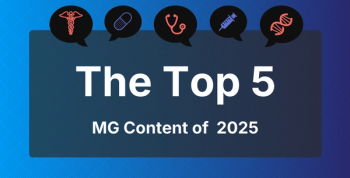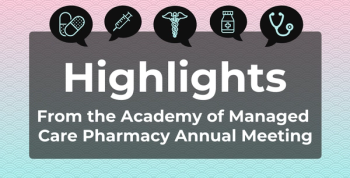
Telemonitoring Reduces Some Exacerbation-Related Health Care Use in COPD
The study aimed to identify the usefulness of telemonitoring to detect and manage acute exacerbation of COPD (AECOPD).
Telemonitoring can reduce emergency department (ED) visits and exacerbation-related readmissions, as well as acute exacerbation-related hospital days in chronic obstructive pulmonary disease (COPD), according to a recent analysis out of China.
Acute exacerbation of COPD (AECOPD), where there is an acute worsening of respiratory symptoms affecting health status and lung function, account for the bulk of health care costs related to COPD (about 70%). In AECOPD, patients, many of whom are older, often have difficulty recognizing early signs that the disease is getting worse based on symptoms and cannot respond quickly to manage their health, indicating an urgent need to develop effective options to help patients recognize the early onset of AECOPD.
The authors said they conducted the review and meta-analysis in order to compare the evidence on the effectiveness of telemonitoring in patients with a history of past AECOPD, compared with patients without the intervention.
The authors searched PubMed, Embase, and the Cochrane Library for randomized controlled trials published from 1990 to May 2020. Primary endpoints included ED visits and exacerbation-related readmissions and results were analyzed with multiple regression analysis.
Out of 505 studies, 17 were selected for the final analysis (N = 3001); each included telemonitoring and a control group.
The telemonitoring may have included various forms of telemedicine: telehealthcare, telerehabilitation, teleconsultation, telecare, telehealth, mobile tool, apps, or a call center. The studies also had to include a telemonitoring device to monitor significant parameters or symptoms.
The control group had usual care without the use of any telemonitoring.
Telemonitoring was found to reduce:
- ED visits (mean difference [MD] −0.70; 95% CI, −1.36 to −0.03)
- Exacerbation-related readmissions (risk ratio, 0.74; 95% CI, 0.60–0.92) Exacerbation-related hospital days (MD, −0.60, 95% CI, −1.06 to −0.13)
- Mortality (OR, 0.71; 95% CI, 0.54–0.93)
SGRQ scores also showed improvement (MD, −3.72; 95% CI, −7.18 to −0.26)
However, telemonitoring did not make a statistically significant difference in all-cause readmissions, the rate of exacerbation-related readmissions, all-cause hospital days, time to first hospital readmission, anxiety and depression, and exercise capacity.
A subgroup analysis by observation period showed that longer periods of telemonitoring (12 months or more) was more effective in reducing readmissions.
Reference
Lu, JW, Wang Y, Sun Y, et al. Effectiveness of telemonitoring for reducing exacerbation occurrence in COPD patients with past exacerbation history: A systematic review and meta-analysis. Front. Med. Published online September 10, 2021. doi: 10.3389/fmed.2021.720019
Newsletter
Stay ahead of policy, cost, and value—subscribe to AJMC for expert insights at the intersection of clinical care and health economics.







































